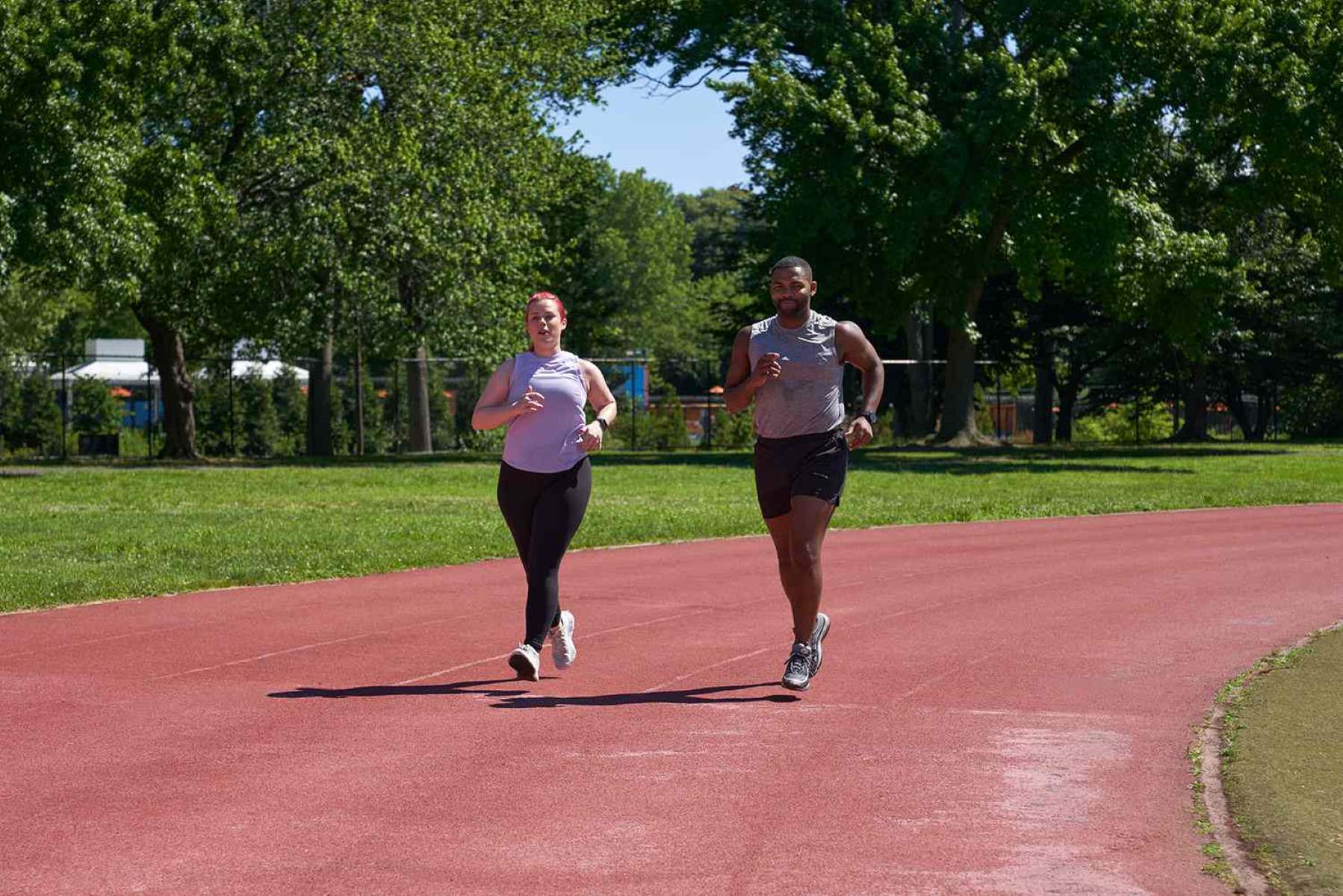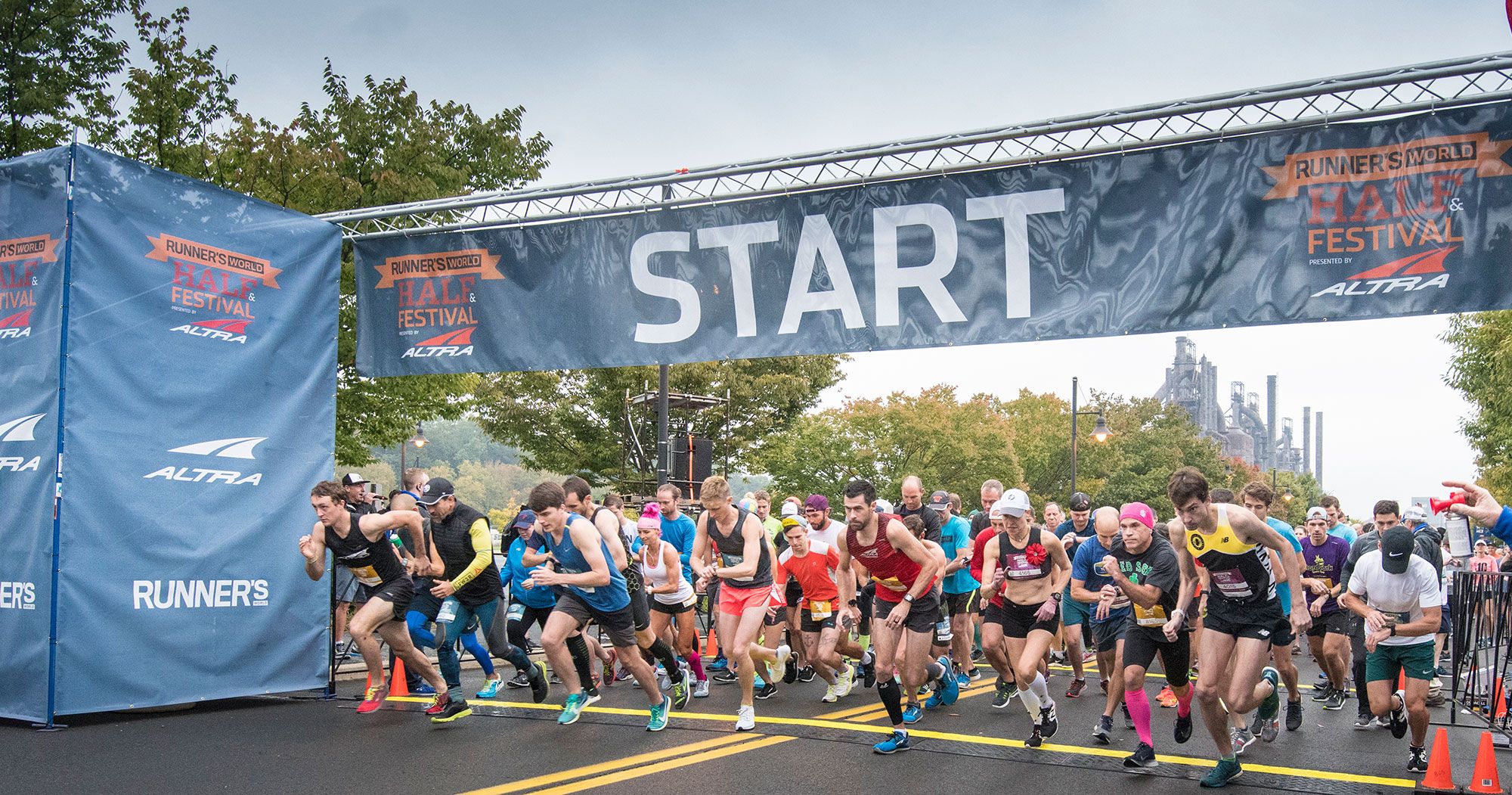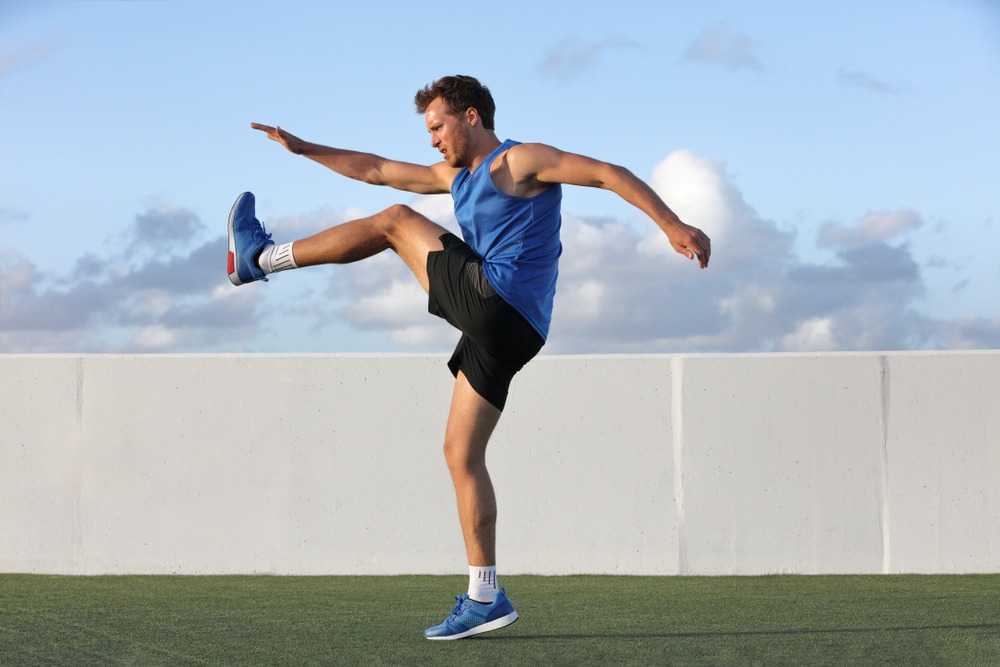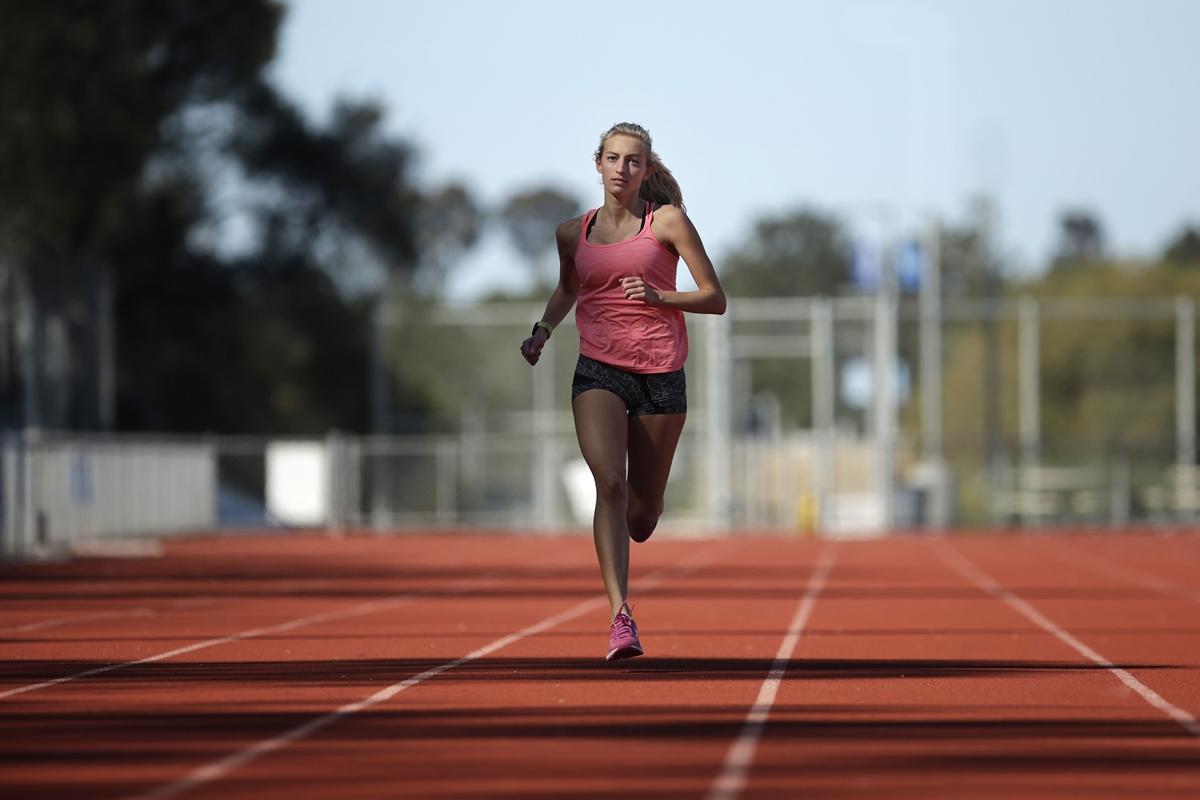

Featured
What Pace Is Running Vs Jogging
Modified: August 19, 2023
Discover the difference between running and jogging with our featured article. Learn about the pace, benefits, and how to choose the right activity for your fitness level.
Introduction
Running and jogging are two popular forms of exercise that can help improve cardiovascular health, boost endurance, and burn calories. While both activities involve moving at a faster pace than walking, there are some key differences between running and jogging.
Running is a high-intensity, fast-paced activity in which individuals move at a relatively quick speed, often with longer strides and a greater range of motion. Jogging, on the other hand, is a lower-intensity form of running, typically done at a slower pace with shorter strides.
Understanding the differences between running and jogging can help you choose the right activity based on your fitness goals, current fitness level, and overall health. In this article, we will delve into the variations in pace between running and jogging, how they impact your health and fitness, the differences in calorie burn, the muscles engaged during each activity, and considerations for beginners.
So whether you’re a seasoned runner looking to optimize your training or a beginner trying to decide between running and jogging, read on to gain valuable insights into these two forms of exercise and their benefits.
Definition of Running and Jogging
Running and jogging are both forms of locomotion characterized by a faster pace than walking. They involve propelling oneself forward through a series of coordinated movements.
Running is defined as moving rapidly by taking quick steps, often with a higher intensity. It is typically associated with a more aggressive and athletic approach. Runners often maintain a consistent pace and aim to cover longer distances.
Jogging, on the other hand, is a more relaxed and leisurely form of running. It involves a slower pace and shorter strides. Joggers may choose to alternate between walking and jogging as they build endurance or simply prefer a slower pace for their exercise routine.
While the specific definitions and perceptions of running and jogging can vary, it is important to note that the key distinction lies in the intensity and speed of the activity. Running is generally considered more intense and vigorous, while jogging is seen as a less strenuous option.
It’s worth noting that individual preferences may also play a role in determining whether an activity is classified as running or jogging. What might be considered as jogging for one person could be considered running for another, depending on their fitness level, experience, and personal preferences.
Ultimately, whether you choose running or jogging, the key is to find an activity that suits your fitness goals and preferences. Both activities offer numerous health benefits and can be adjusted to suit various fitness levels.
Differences in Pace
The main difference between running and jogging lies in the pace at which they are performed. Running is characterized by a faster pace, typically involving a higher intensity and speed. Runners often maintain a steady pace and cover greater distances in a shorter amount of time.
On the other hand, jogging is performed at a slower pace. It involves shorter strides and a less aggressive approach than running. Joggers may choose to alternate between periods of walking and jogging, especially when they are first starting out or want a more relaxed workout.
It’s important to note that the exact pace of running and jogging can vary depending on an individual’s fitness level, goals, and overall health. For some, a jogging pace may still be faster than the average walking speed, while for others, running may entail a slower pace due to factors such as injury or fatigue.
To provide a general comparison, running typically involves a pace of around 6 to 10 miles per hour, while jogging falls within the range of 4 to 6 miles per hour. However, these numbers can vary based on personal fitness levels and workout intensity.
Another key difference in pace between running and jogging is the stride length. Runners tend to have longer strides, covering more ground with each step. This is partly due to the higher intensity and speed at which they move. In contrast, joggers have shorter strides, resulting in a slower overall pace.
It’s worth noting that as individuals progress in their fitness journey, their jogging pace may naturally evolve into a faster running pace. This can occur as cardiovascular endurance increases and muscles become stronger.
Ultimately, whether you choose to run or jog depends on your personal preferences, fitness goals, and current ability. Both activities provide valuable cardiovascular benefits and can be adjusted to suit your individual needs.
Impact on Health and Fitness
Both running and jogging have significant impacts on health and fitness, but the level of intensity and the specific benefits achieved may vary.
Running, being a more intense form of exercise, has a greater impact on cardiovascular health. It helps improve heart function, increases lung capacity, and enhances overall endurance. Regular running can reduce the risk of cardiovascular diseases such as heart attacks and strokes. It also strengthens the immune system and improves mental well-being by reducing stress and releasing endorphins.
Jogging, while less intense, still provides several health benefits. It can help maintain a healthy weight or contribute to weight loss, depending on the individual’s caloric intake and intensity of the workout. Jogging also strengthens the heart, improves circulation, and aids in the prevention of chronic conditions such as diabetes, high blood pressure, and certain types of cancer.
Both running and jogging have positive effects on mental health. Engaging in these activities can reduce anxiety and depression, boost mood, and enhance cognitive function. The fresh air and natural scenery often associated with outdoor running and jogging further contribute to the mental well-being of individuals.
When it comes to fitness, running is known to improve speed, agility, and power. It challenges the cardiovascular system and improves anaerobic endurance. Running is often preferred by athletes who participate in sports that require bursts of speed, such as sprinting or soccer.
Jogging, on the other hand, focuses more on aerobic endurance. It builds stamina, strengthens muscles, and improves overall fitness levels. Jogging is a great starting point for beginners or those who are recovering from an injury, as it puts less stress on the joints and is less demanding on the muscles.
Ultimately, the impact of running or jogging on health and fitness will depend on the individual’s goals, physical abilities, and consistency in engaging in these activities. The most important factor is to choose a form of exercise that can be sustained long-term and that brings joy and satisfaction.
Calorie Burn Comparison
One of the factors many individuals consider when deciding between running and jogging is the difference in calorie burn. While both activities contribute to calorie expenditure, running generally burns more calories than jogging due to the higher intensity and greater demand on the body.
The exact number of calories burned during running and jogging depends on several factors, including body weight, pace, duration, and terrain. On average, running at a moderate pace burns approximately 8 to 12 calories per minute for a 150-pound person. This means that a 30-minute run can burn anywhere from 240 to 360 calories.
Jogging, being a lower-intensity activity, burns fewer calories. On average, a person weighing 150 pounds can burn around 5 to 8 calories per minute while jogging. This equates to approximately 150 to 240 calories burned during a 30-minute jog.
It’s important to note that these calorie burn estimates are general averages and may vary based on individual factors. For instance, a person with a higher body weight will burn more calories than someone who weighs less during the same activity.
Additionally, the intensity at which running and jogging are performed can significantly impact calorie burn. Running at a faster pace or incorporating high-intensity intervals can increase the calorie burn even further. Similarly, jogging uphill or on uneven terrain can elevate the intensity and boost calorie expenditure.
It’s also worth noting that the afterburn effect, also known as excess post-exercise oxygen consumption (EPOC), can contribute to additional calorie burn. After a run or jog, the body continues to burn calories at an increased rate as it works to restore oxygen levels and repair muscle tissue.
While running may burn more calories compared to jogging, it is important to choose an activity that aligns with your current fitness level and personal preferences. What matters most is finding an exercise routine that you enjoy and can stick to consistently, as long-term consistency is key to achieving weight loss or weight maintenance goals.
Muscles Engaged
Both running and jogging engage various muscles throughout the body, but the intensity and specific muscles involved may differ.
Running is a high-impact activity that engages multiple muscle groups. The primary muscles targeted during running include the quadriceps, hamstrings, calves, and glutes. These muscles work together to propel the body forward and generate the necessary force and power for running. The core muscles, including the abdominals and lower back, also play a role in stabilizing the body and maintaining proper form during running.
In addition to the lower body muscles, running also activates the upper body. The arms and shoulders assist in maintaining balance and rhythm while running. Regular running can help tone and strengthen both the upper and lower body muscles, resulting in improved muscle definition and overall strength.
Jogging, while less intense, still engages many of the same muscle groups as running. The quadriceps, hamstrings, calves, and glutes are still actively involved in jogging, albeit to a lesser extent. The core muscles and upper body muscles also come into play, contributing to stability and balance while jogging.
In comparison to running, jogging places less stress on these muscle groups due to the lower intensity and slower pace. This makes jogging a suitable option for individuals who may have joint issues or are looking for a more low-impact form of exercise.
It’s important to note that incorporating strength training exercises alongside running or jogging can provide additional benefits. Strength training exercises, such as lunges, squats, and planks, target specific muscle groups and help improve overall muscle strength, stability, and endurance.
Ultimately, whether you choose to run or jog, both activities can contribute to muscle development and toning. The key is to incorporate a balanced exercise routine that includes cardiovascular activities and strength training for optimal results.
Considerations for Beginners
For beginners, starting a running or jogging routine can be both exciting and challenging. Here are some important considerations to keep in mind when beginning either activity:
1. Start Slow: It’s crucial to start at a comfortable pace and gradually build up your endurance. Beginners may find it helpful to begin with a mix of walking and jogging, gradually increasing the amount of time spent jogging as they build strength and stamina.
2. Listen to Your Body: Pay attention to any discomfort or pain during running or jogging. It’s important to listen to your body and take rest days when needed. Gradually increase the intensity and distance over time to avoid overexertion or injury.
3. Invest in Proper Footwear: Wearing appropriate running or jogging shoes that provide proper support and cushioning is essential. Visit a specialty running store to get fitted for the right pair of shoes based on your unique needs and foot structure.
4. Warm-up and Cool Down: Prior to starting any run or jog, warm-up exercises such as brisk walking, stretching, or dynamic movements can help prepare the muscles for activity and prevent injuries. Similarly, cooling down with light stretching afterward can help reduce muscle soreness and maintain flexibility.
5. Stay Hydrated: Both running and jogging can cause significant sweating, so it’s important to stay hydrated before, during, and after your workouts. Carry a water bottle with you or plan your route near water fountains to ensure you can rehydrate as needed.
6. Vary Your Routes: To keep your running or jogging routine interesting, explore different routes or terrains. This can help prevent boredom and challenge your muscles in different ways.
7. Listen to Music or Podcasts: Some individuals find that listening to upbeat music or podcasts can help make their runs or jogs more enjoyable. Consider creating a motivational playlist or downloading your favorite podcasts to keep you engaged during your workouts.
8. Consider a Running Group or Partner: Joining a running group or finding a running partner can provide motivation, accountability, and a sense of community. Running or jogging with others can make the experience more enjoyable and help you stay committed to your routine.
Remember, as a beginner, it’s important to be patient and kind to yourself. Progress may take time, but with consistency and dedication, you will gradually improve your fitness and achieve your running or jogging goals.
Conclusion
Running and jogging are both fantastic forms of exercise that offer numerous health and fitness benefits. While running is a higher-intensity activity that involves a faster pace and greater impact, jogging provides a more relaxed and accessible option for individuals of all fitness levels.
Understanding the differences between running and jogging, including pace, impact on health and fitness, calorie burn, muscles engaged, and considerations for beginners, can help you make an informed decision about which activity is right for you.
Whether you choose to run or jog, the most important aspect is finding an exercise routine that you enjoy and can sustain long-term. Both activities provide cardiovascular benefits, help improve endurance, strengthen muscles, and contribute to overall well-being.
If you are a beginner, start at a comfortable pace and gradually progress as you build up your fitness level and endurance. Give importance to proper warm-up, hydration, and maintaining a listen to your body to avoid injuries.
Ultimately, the choice between running and jogging depends on your goals, fitness level, and personal preferences. Some may gravitate towards the invigorating intensity of running, while others may prefer the gentle therapeutic aspects of jogging. Whichever activity you choose, embrace the journey, stay consistent, and enjoy the physical and mental benefits that running or jogging can bring.








